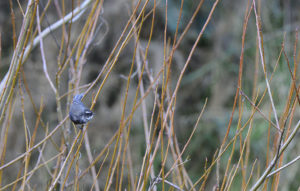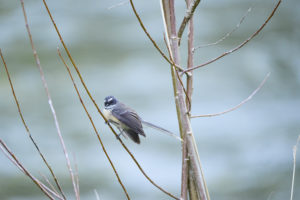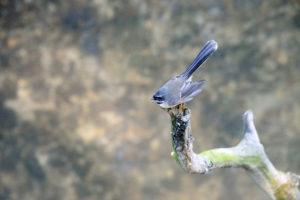Kaj Halberg - writer & photographer
Travels ‐ Landscapes ‐ Wildlife ‐ People
The charming tiwakawaka


As it turned out, this charming acquaintance was the New Zealand fantail (Rhipidura fuliginosa), which, as its name implies, is restricted to New Zealand. The plumage of this bird is very variable, being mainly grey, white, and pale brown. It also occurs in a dark morph, which is sometimes called black fantail.


Tiwakawaka is also the name of a grandson of the demi-god and folk hero Maui-potiki, one of the first Maori settlers to arrive in New Zealand more than a thousand years ago. When Maui asked tiwakawaka to tell him, where his ancestress Mahuika kept the fire hidden, the bird refused. In retaliation, Maui grabbed it and squeezed it very hard. This is why the bird today has bulging eyes, and a tail which projects far behind its body. It also explains why it flies so erratically.
Another Maori explorer of those days was Kupe. When exploring the new land, Kupe had noticed the fantail, tiwakawaka, which carried its tail feathers erect and could spread them out like a fan. This challenging behaviour reminded Kupe that he was entering the domain of Tane, god of the forest. (Source: nzbirds.com/birds/fantail1.html)

Formerly, fantails were included in the Old World flycatcher family (Muscicapidae), but today they form a separate family, Rhipiduridae, together with two species of silktail (Lamprolia) and the drongo fantail (Chaetorhynchus papuensis).
Genetic research has had the effect that three species, which were previously included in Rhipidura, have been transferred to other families. The yellow-bellied fantail (Chelidorhynx hypoxanthus), distributed in the Indian subcontinent, the northern parts of Indochina, and southern China, has been moved to the family Stenostiridae, whereas the slaty monarch (Mayrornis lessoni), which is endemic to Fiji, and the black monarch (Symposiachrus axillaris), which lives in New Guinea, are now included in the family Monarchidae.
In 1984, when I visited the Ifugao tribe in Luzon, northern Philippines, I was told that if a blue-headed fantail (Rhipidura cyaniceps) crossed the trail in front of you, it was regarded as an omen of bad luck, which would deter members of the tribe from travelling that particular day.
My adventures among the Ifugao are described on the page Travel episodes – Philippines 1984: Shamanism among Ifugao tribals.

